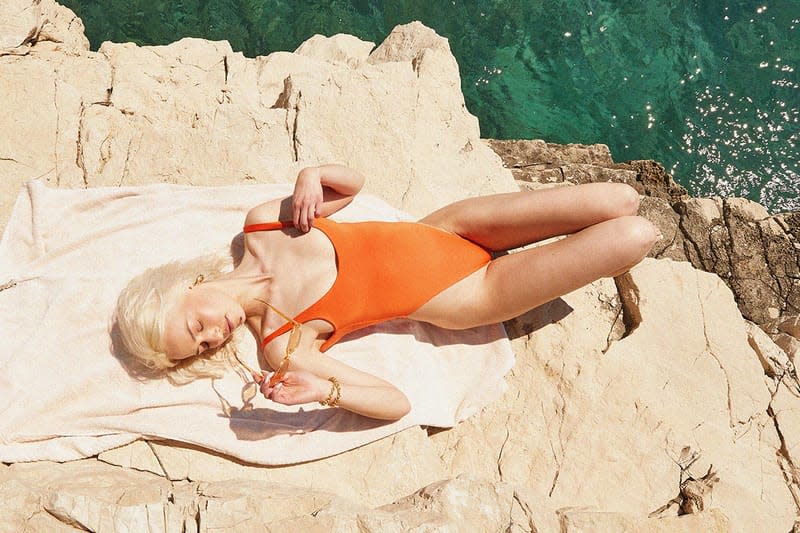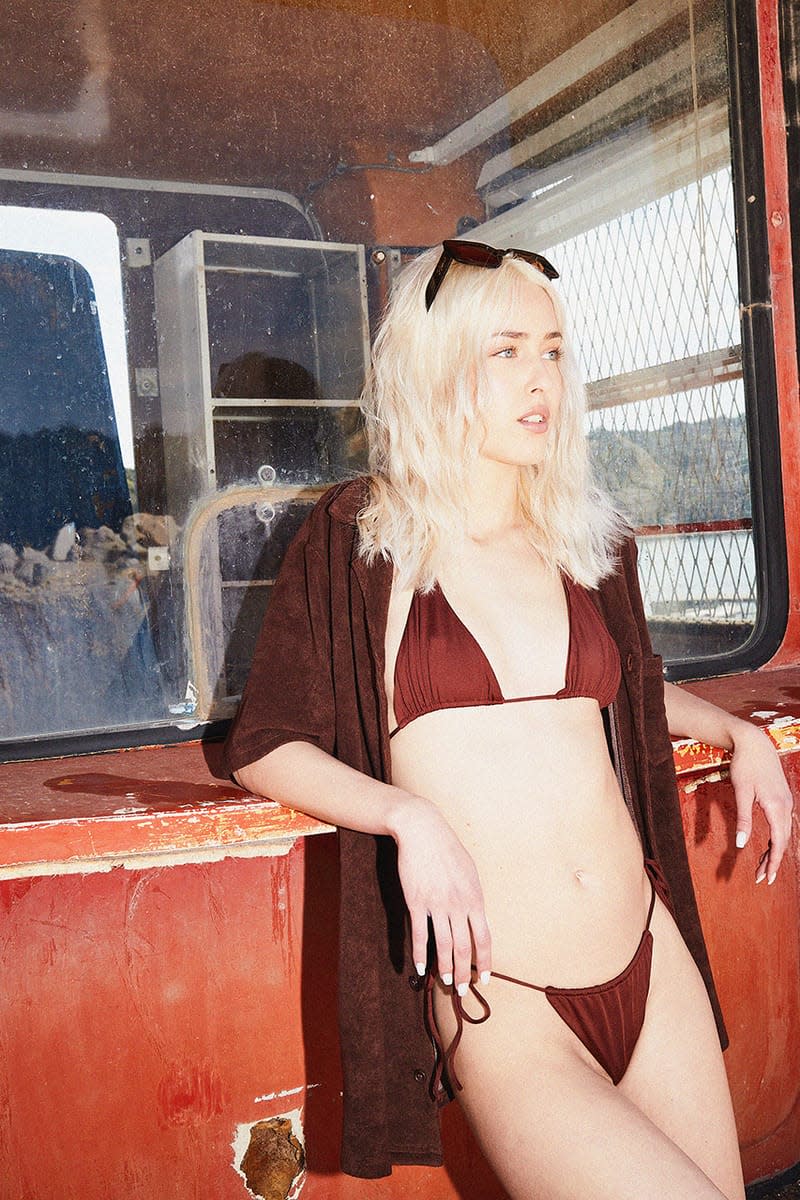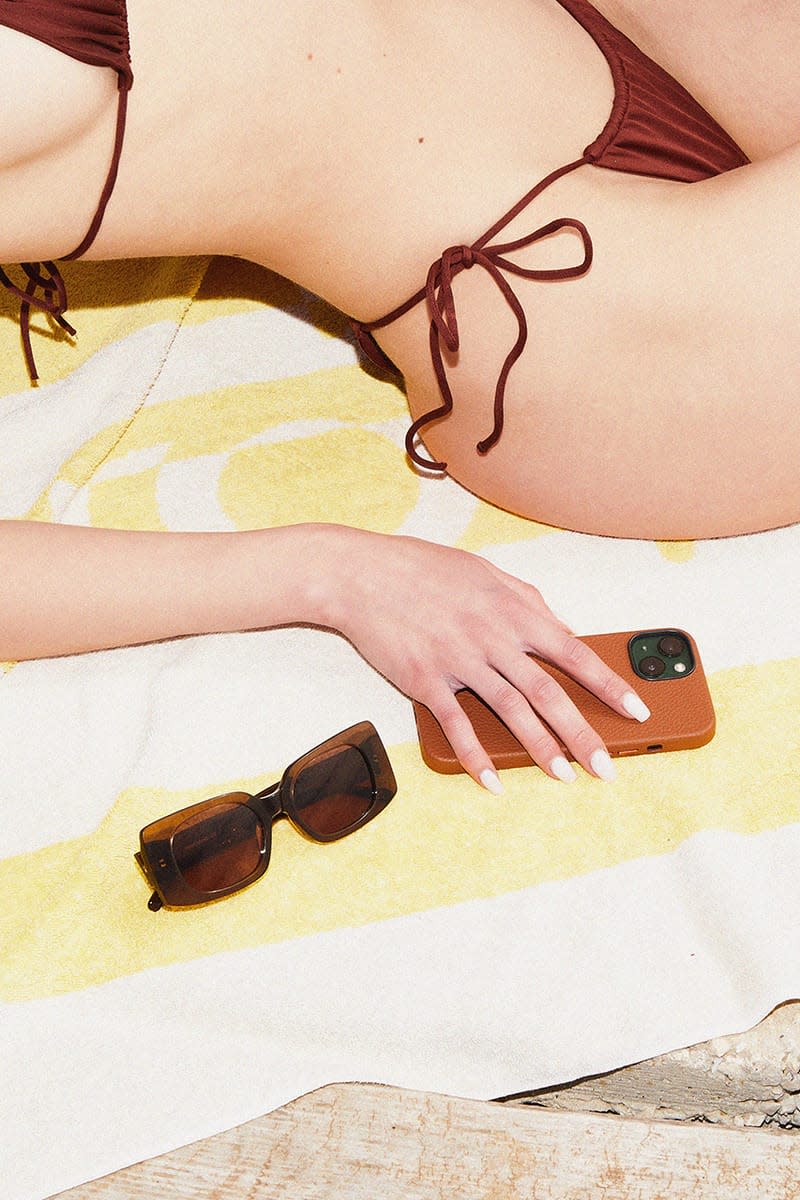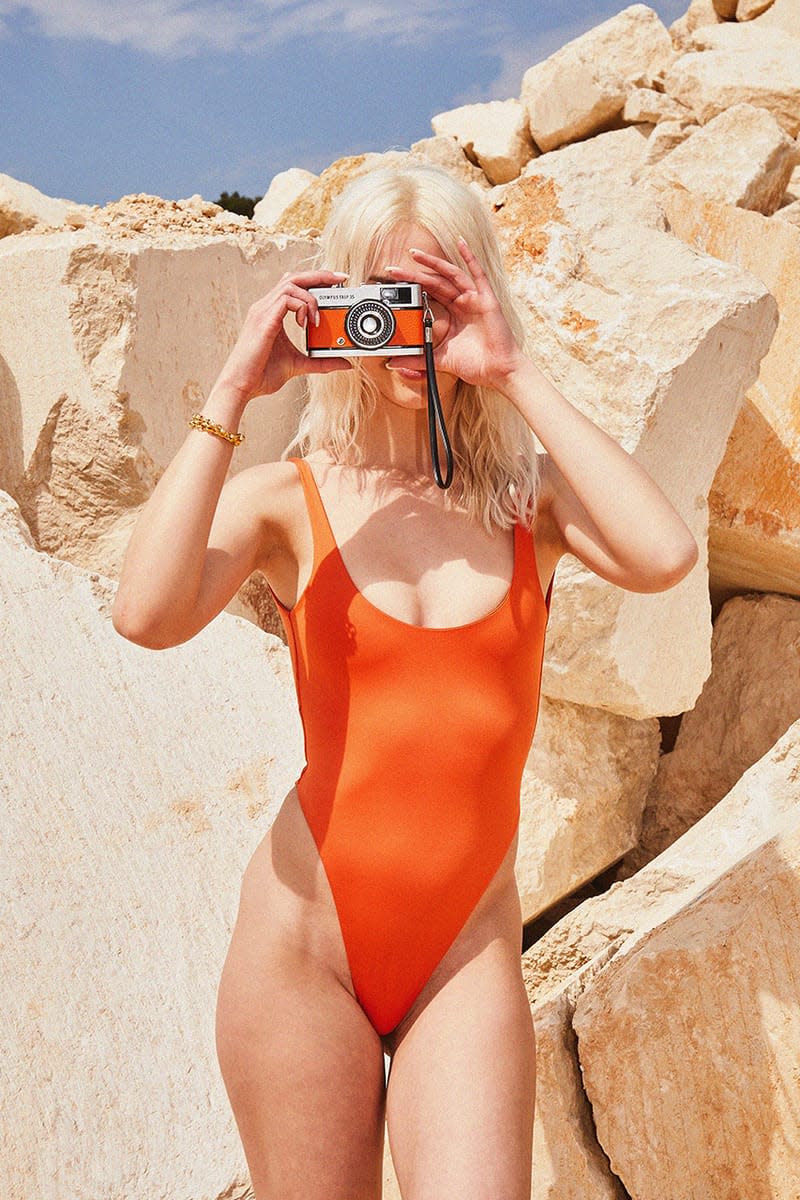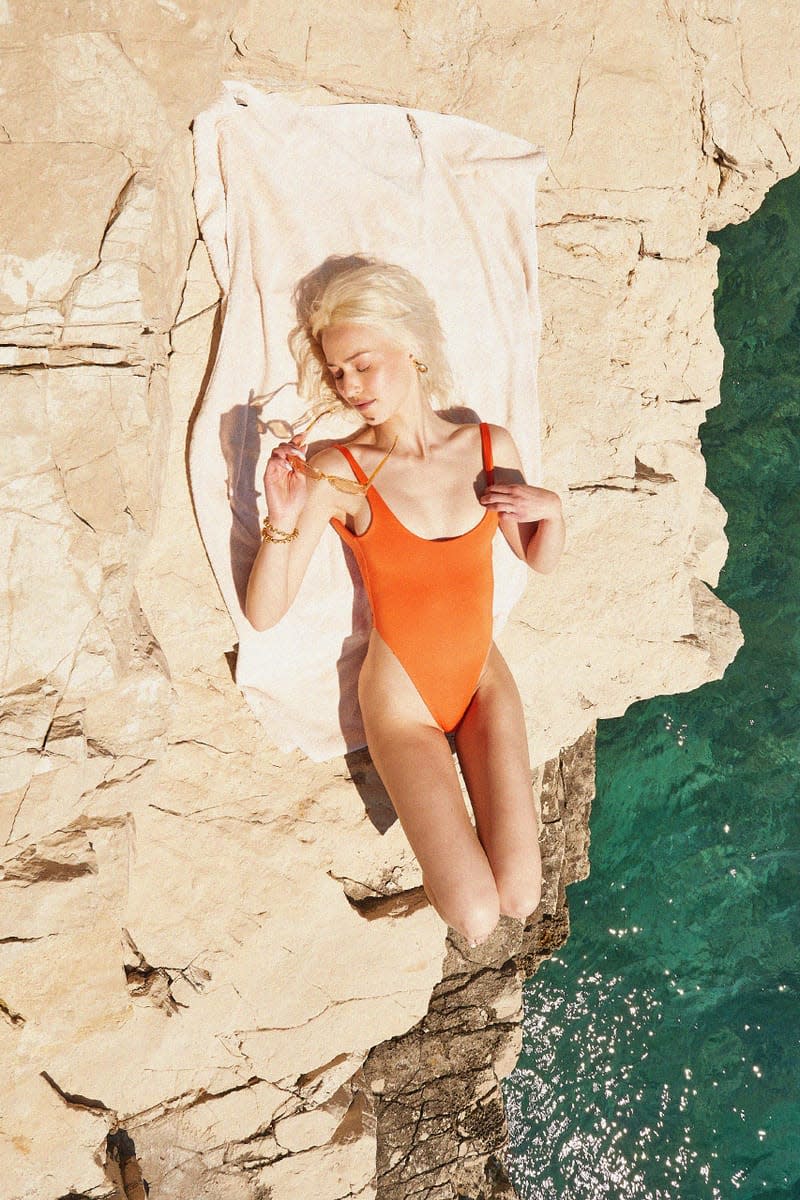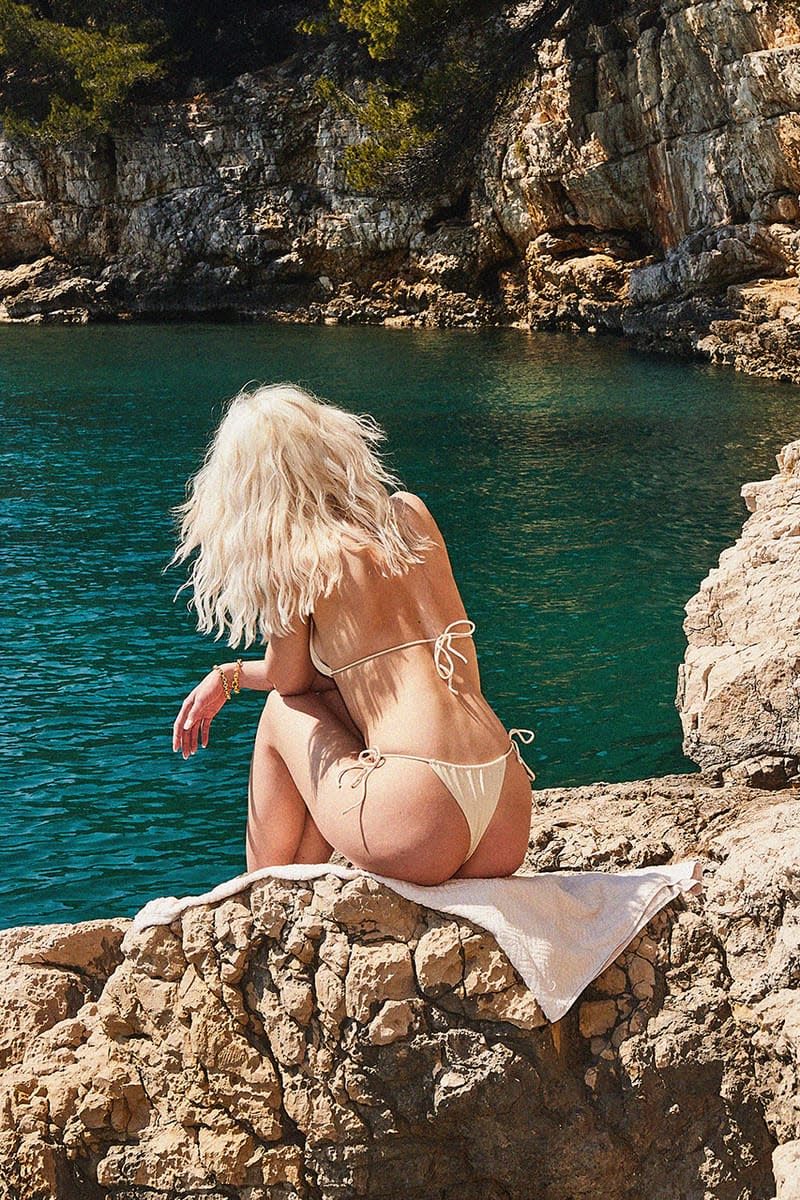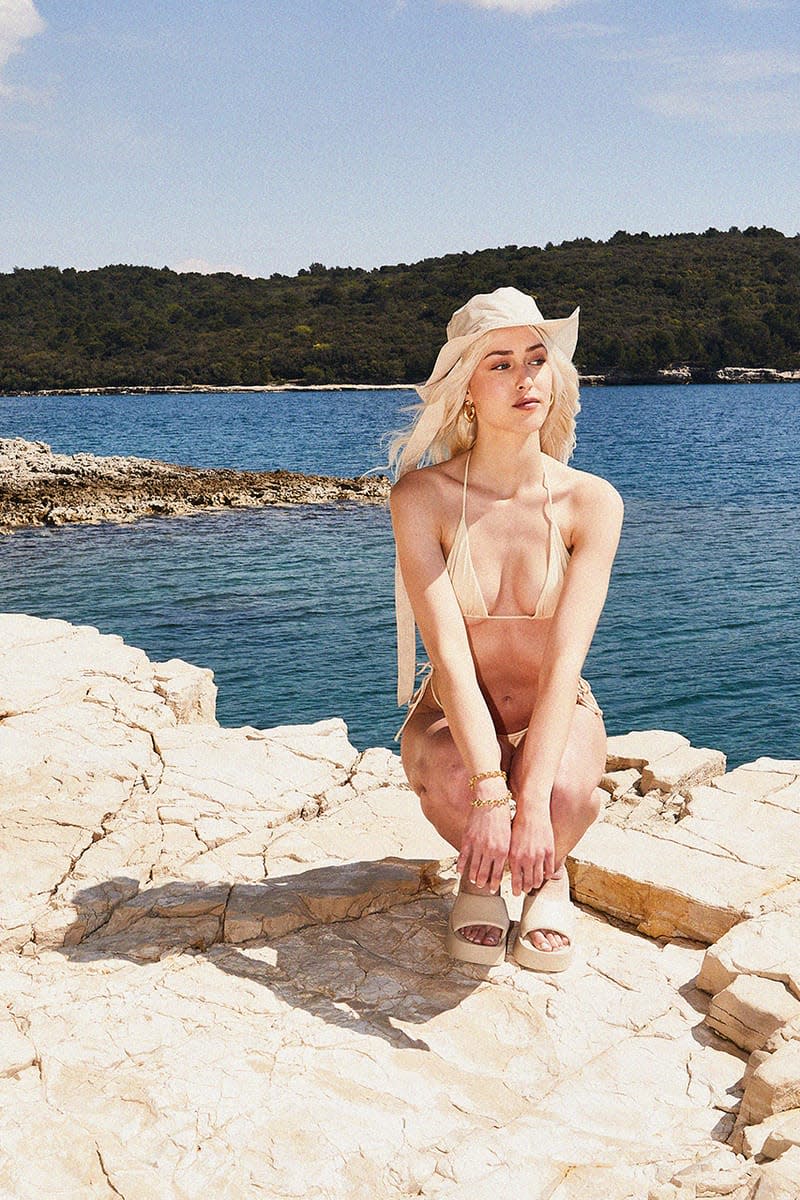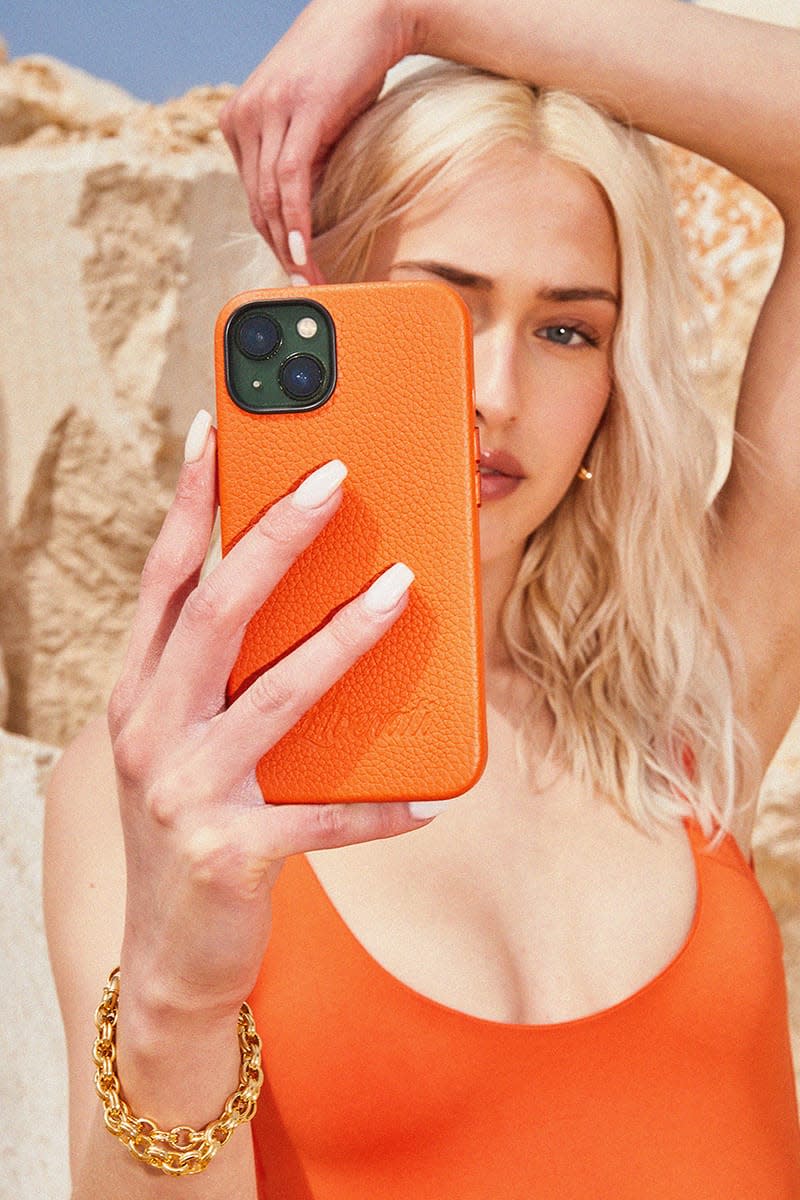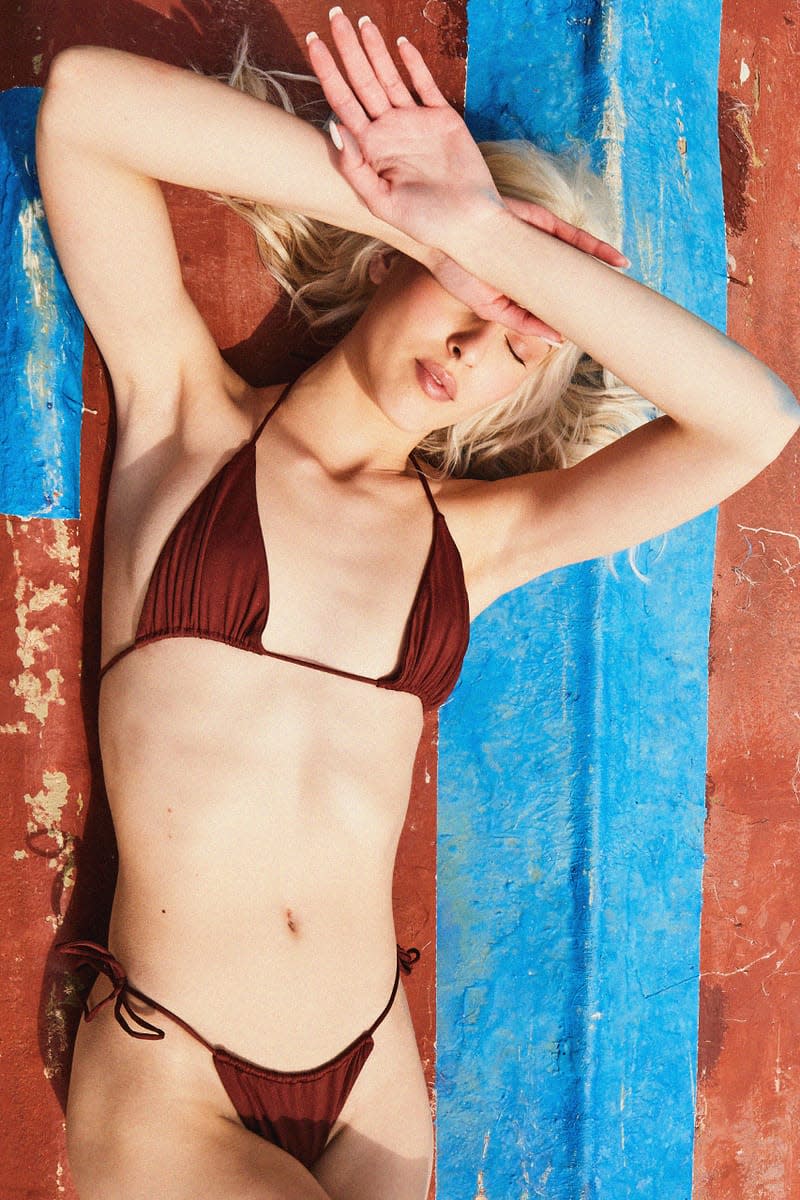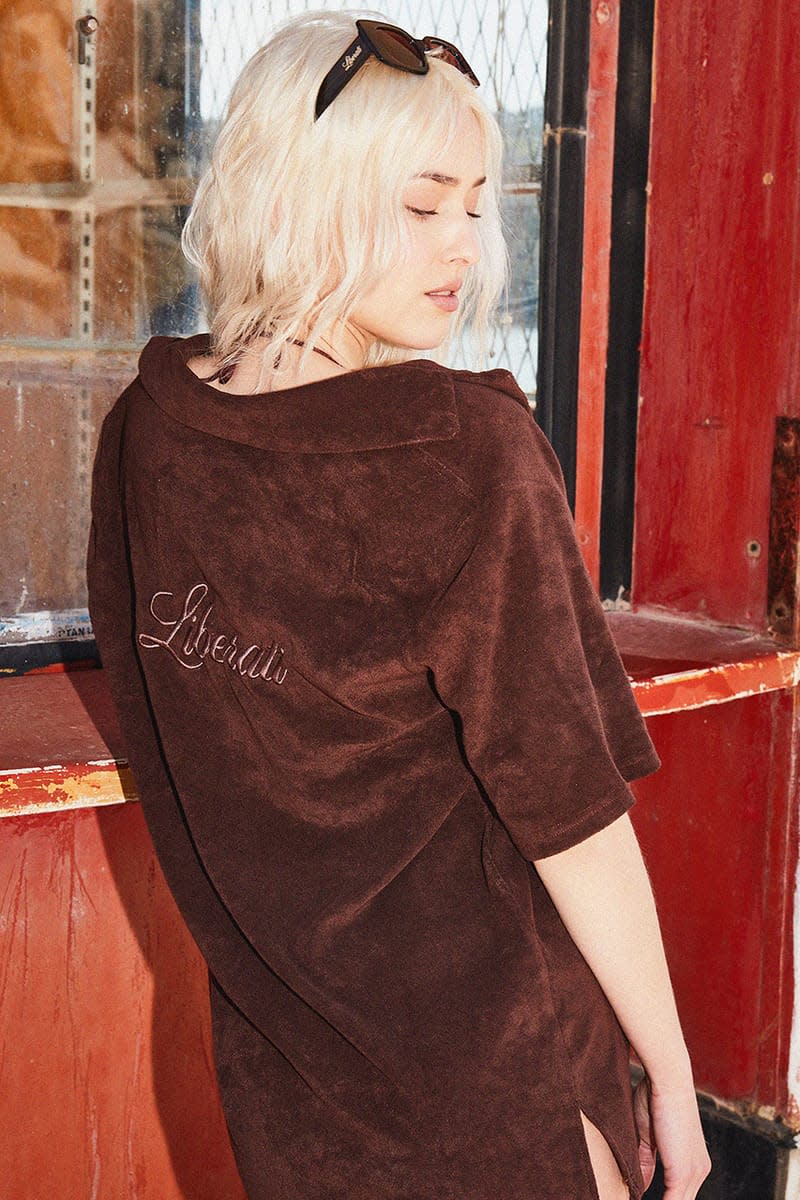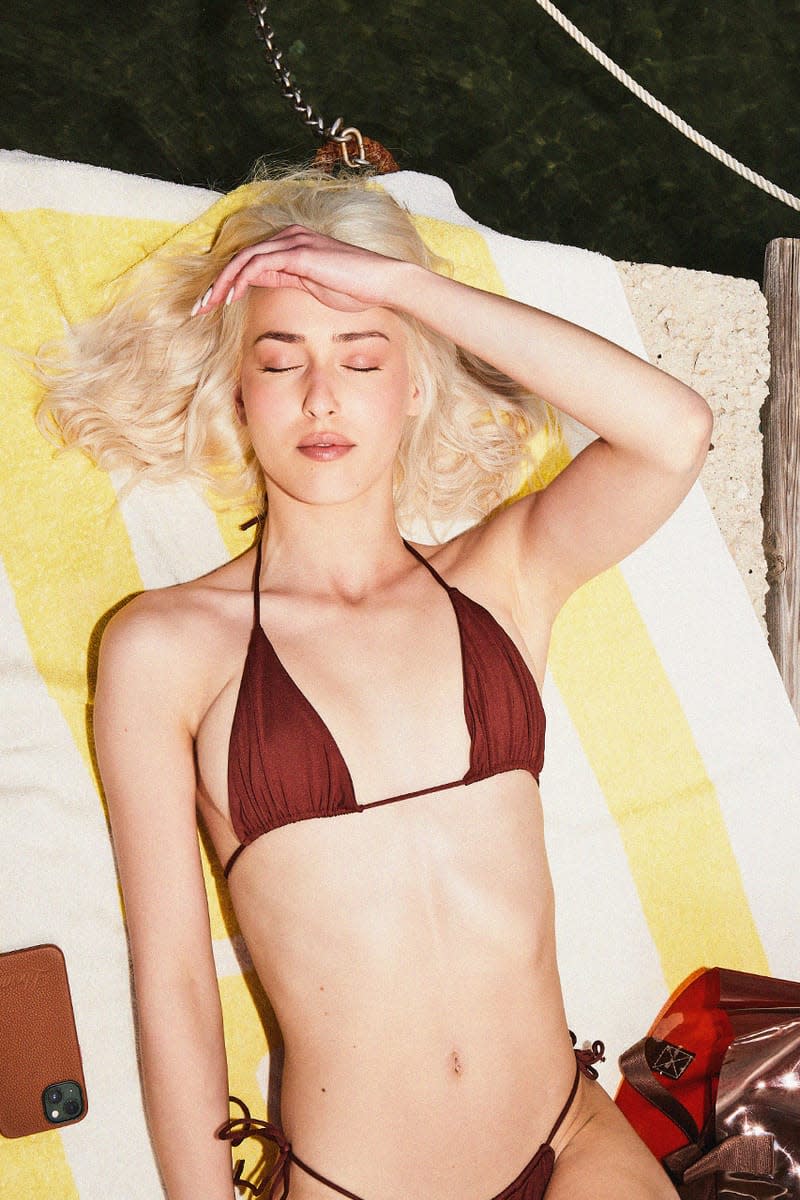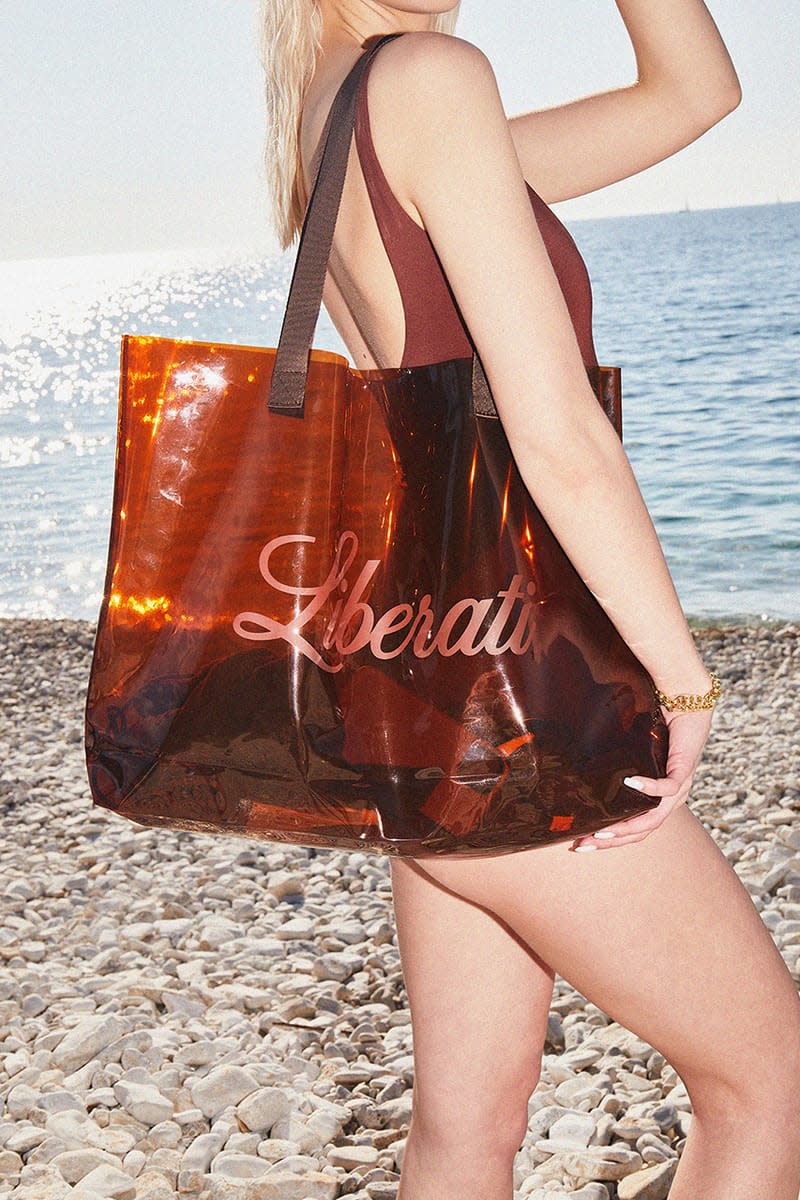How Celeb Stylist Kiera Liberati Went From Styling Rappers to Designing for Them
Kiera Liberati is one of the UK's biggest celebrity stylists. From styling the likes of London rappers Ghetts and Krept and Konan to lioness Chloe Kelly and broadcaster Alex Scott, she's worked with brands like adidas, Soho House and Nike and now -- she's launched her very own lifestyle brand: aptly named, Liberati.
As someone who's responsible for some of our favorite artists' best looks, creating her own brand felt like a natural progression for the stylist, but it's something that she toyed with for quite some time. Eventually, enough of her peers and clients convinced her that it was the right move and a few lockdowns later, Liberati was born.
Aiming to provide a capsule wardrobe for its community, the brand prioritizes ethical production and high-quality materials. With each piece made and manufactured in the UK, not to mention three-to-four fitting stages per item, it's safe to say that the brand practises what it preaches, something that's been instrumental to its success.
View this post on Instagram
"We looked into manufacturers in the UK because we wanted to keep the process as ethical as possible but also with the brand being so new -- I wanted to be able to make sure I could go and see the stuff that was getting made," Liberati tells Hypebae. Alongside the actual production of the product, the color palette is one that sets the brand apart.
"I grew up with mixed heritage so I wanted to make sure that my friends who are really dark-skinned could wear the colors. It took a bit more time getting the brown right, because we didn't want it to wash anybody out, but it was about picking colors that worked for and suited everybody," she adds.
We caught up with founder Kiera Liberati to find out more about the story behind the brand, how she transitioned from styling to designing and why Liberati will always prioritize authenticity.
Scroll down to read the full interview.
View this post on Instagram
Tell us a bit about the decision to create Liberati, how did the brand come about?
When I was really young, I used to draw fashion illustrations and I was obsessed with them. I thought I wanted to be a fashion designer, then I went to school and studied fashion design and I realized that I wasn't as into the technical side of things. I realized that I appreciated the art direction side more, looking at mood boards and designs, so I moved towards fashion styling. I studied it at uni and I've been styling for years.
In lockdown, everyone was telling me that I should start my own brand, it was like "You work with all these amazing artists, you should start your own brand and have something that's just yours." I was like OK, but I knew how hard it would be to start my own brand. I've worked with so many young designers on the come-up, it's a really difficult thing. I had a friend offer to help with the technical side of things, if I focused on the design and in that week, three or four different people told me to go for it so eventually I was just like f-ck it, let's do it.
It was quite a few months of work trying to find the right fabrics and manufacturers because I'm really keen to make as much of the product in England as possible, and then we moved into the sampling stage -- which is actually the most expensive. At that point, my investor dropped out and I was a bit like "Oh god, I've just had all my friends helping me for free for the last three months," but I'm also quite stubborn so I was like "I'm still just gonna do it anyway."
That sounds like a tricky process! What can you tell us about your creative process and where the inspiration for the designs come from?
I started designing around the time that we were just coming out of lockdown and I wanted to make sure that we all still felt comfortable, even when stepping back out into the world. The whole idea is that every piece fits into your lifestyle, so you can be wearing streetwear pieces and still step into a decent bar or an event at the end of the night and still feel comfortable. It's kind of a way to build a capsule wardrobe.
In terms of the design, vintage was actually a big inspiration for me -- that and the '70s. We were looking at old movie stars, because they just look glamorous all the time, at old postcards and back when swimsuits were made from towelling material. We took inspiration for styling from things like Mad Men, I wanted it to look really retro. Then it came down to the colors, I wanted it to have a nostalgic, old-school feel, that's also why all our pieces are named after movie stars.
We started to look at colors more deeply, I knew that cream was a versatile color but it was about finding the shade that suited most skin tones. I grew up with mixed heritage so I wanted to make sure that my friends who are really dark-skinned could wear the colors. It took a bit more time getting the brown right, because we didn't want it to wash anybody out, and it was about picking colors that worked for and suited everybody.
View this post on Instagram
Definitely, it's so important. How do you think that your career as a stylist has helped to inform the collection's aesthetic and visual direction?
It's been interesting because within my personal style, I'm super laid back. I personally like to wear tracksuits and focus on comfort as much as possible. Whereas with my artists, they want to look more elevated and premium. A lot of them are from that more urban sportswear background, so it became about using silhouettes, shapes and styles that you could dress up or dress down. Everything had to be interchangeable, from that aspect. I don't really like to limit myself or the brand. I wouldn't want to just typecast. I want to make sure that the reason you have it is because it's all interchangeable, and because it's so easy to wear it.
Your career as a stylist has typically revolved around styling male artists, what was it like to transition from that to designing and styling for both men and women?
I started styling women actually, but I fell into the menswear scene because I had such a big interest in UK music. I grew up on grime and hip-hop, so when the opportunities arose to dress those artists, I ended up going further down the menswear route. I think it doesn't actually matter, because a lot of Liberati is so unisex. The big shirts, you can wear them over a bikini or with a vest and matching pants, it's all pretty versatile.
Where I'm a bit bigger too, I was quite conscious of creating shapes and silhouettes that suited everybody. The design process took a lot longer because we went through about three to four fitting stages for each item. It was a slower start as a result, but it means that the customer we're starting to build really loves the stuff.
We touched on it earlier, but you spoke about wanting to keep production local. Why is that important to you? How do you incorporate sustainability into the design and manufacturing process?
We picked the fabric that we wanted, we didn't want to do velour as we felt that Juicy Couture already does that so well. We wanted something that was a bit more cosy and less shiny. We looked into manufacturers in the UK because we wanted to keep the process as ethical as possible but also with the brand being so new -- I wanted to be able to make sure I could go and see the stuff that was getting made.
It's often more expensive to get things made here, as opposed to places like Portugal and Turkey, but I know that everyone here is being paid properly. It's difficult with the choice of fabrics because, for Fall/Winter, we had trouble sourcing woven silk here -- it's something that Italian manufacturers specialize in so we might source from elsewhere but it will be made and manufactured in England.
View this post on Instagram
Definitely. My final question, what would you say is the next step for you and Liberati?
The next step for us is getting stocked in more stores, but it's harder to scale up until you're making a bigger amount of money. We're in a weird position where we're getting a stronger following and a bigger audience and we want to take it to the next level, but I actually don't want to like expand ridiculously -- I want to grow naturally and have that really authentic audience. A lot of my artists are my inspiration too in a lot of ways, they've been OGs for so long and managed to stay relevant, I think they've done that by not changing their sense of who they are. For us, we're really trying to make sure that everything we do is so authentic and so community-led.
Obviously I've got great relationships from styling, but it's not about clout, it's about general genuine talent and good quality pieces. Good quality vibes and with everything we do, it's about working with people, not necessarily just growing up with people. I do believe in the product. I do believe in what we're putting out in the world. I think right now for us, we just want people to see how great it is and buy into what we're seeing, if that makes sense.
Take a look at Liberati's latest collection above, and head to the brand's website to purchase.
